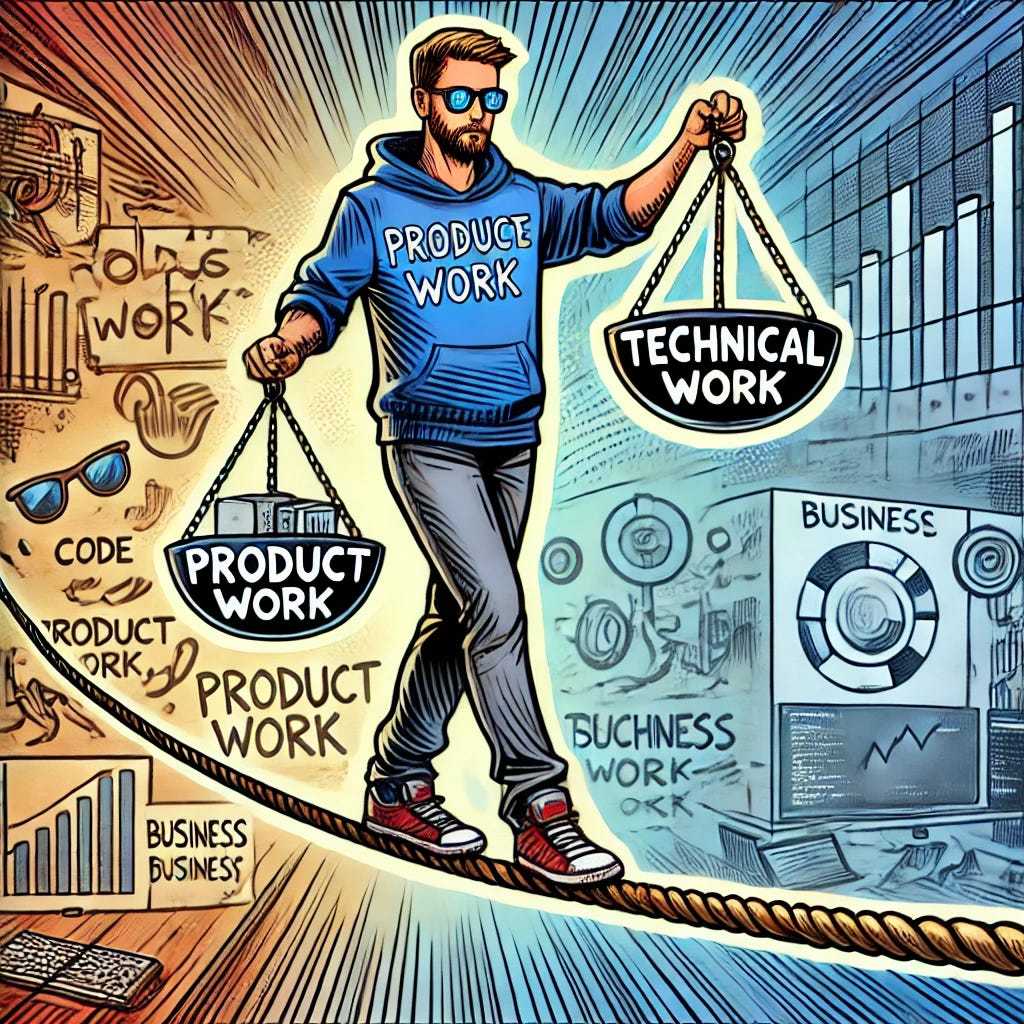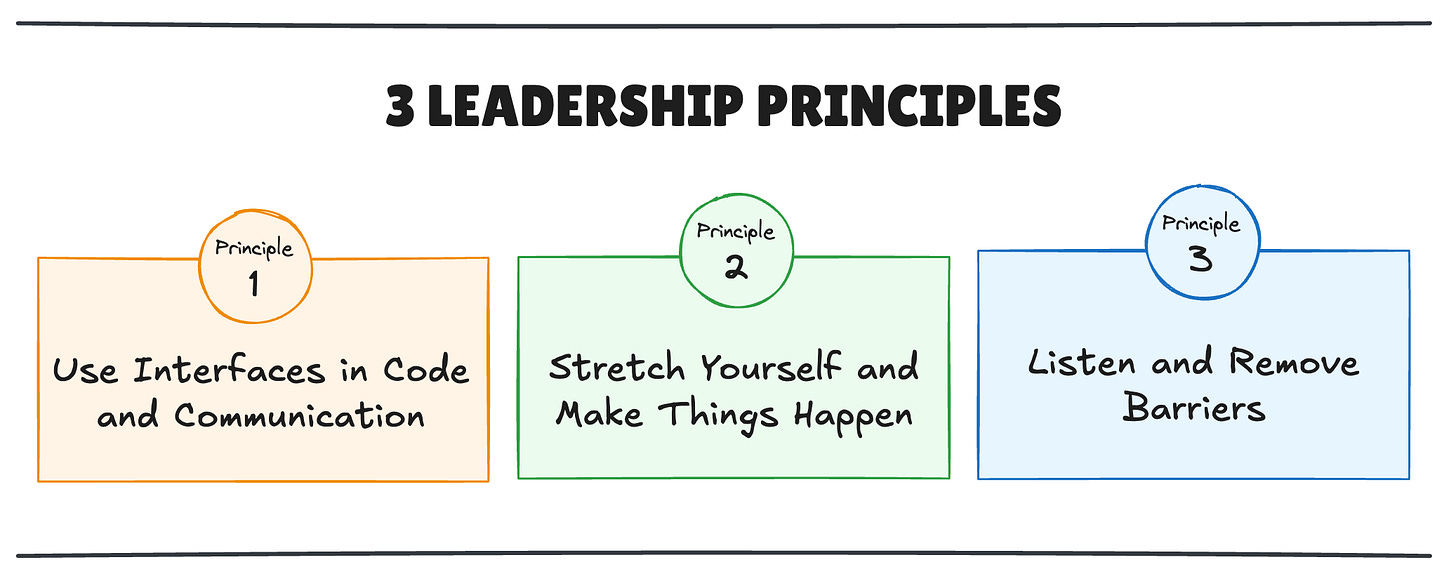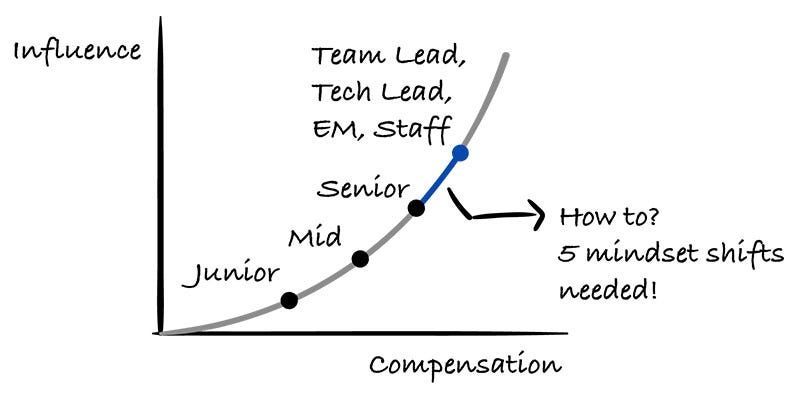How do you balance tech with product work?
Learn how to treat tech work as an important business driver and how being hyper-proactive can launch your career growth.
Balancing tech work with product work is difficult. Comparing shipping a new feature aiming to bring a 7% increase in user conversion with a big refactoring of a legacy authentication system everyone dreads working with feels like comparing apples and oranges. Also, it does not help that engineers sometimes tend to shift responsibility for prioritizing tech work to product managers (“I wanted to do it, but it got deprioritized by the product.“).
The below article by Marc G Gauthier proposes treating both technical projects and product projects in the same manner. This resonated with me as I feel that all the problems start the moment you segregate the two. Properly including tech work in the product work leads to stronger engineering organization and stronger trust between engineering and product.
So be very clear about what’s not up for debate with your product partners, communicate how/why that is important for the business, and keep your engineering posture in good shape 💪.
PS: I am curious how you are balancing tech vs product work in your teams, let me know in the comments 💬.
All Projects Are Business Projects (13 min)
marccg.com
Balancing technical work with business/product work is an evergreen topic in software development. A lot of organizations separate these two workstreams and treat tech work as a cost source and business work as the sole value source. Often tech work is parked for “later”. Very early you learn that there is no such thing as “later” and “later” almost never happens. This article argues for treating all project as business projects (which I love 😍) and even gives you example of how you can frame some common “tech projects” through a business lens. This should help you to communicate with more confidence when explaining why that refactoring/migration/re-architecture is necessary to your non-technical partners.
Audience: Software Engineers / Engineering Managers
Value: Learn how to incorporate technical work in your roadmap
ToT Rating: ⭐⭐🌟
Engineer to CEO in 3 years: These key lessons got me there (8 min)
High Growth Engineer
There are a lot of articles on career growth and what you can do to get promotions faster. This article is unique as it shares lessons through an amazing hyper-speed career growth story 🚀 from
. There are three important lessons there, but overarching theme that pops out is being hyper proactive. Proactivity leads to spotting most pressing problems/opportunities for your business. Proactivity in addressing those could mean you stepping completely out of your role - for example engineer to product or product to sales (talk about stepping out of your comfort zone). While everyone else sits in their comfort zones, you will grow both skill-wise and career-wise.Audience: All tech professionals
Value: Learn how to make huge impact on your org
ToT Rating: ⭐⭐
5 mindset shifts needed to grow from engineer to leader (9 min)
Engineering Leadership
Switching from an engineer to an engineering manager will require you to learn new skills that you did not need that much before. Most importantly you will need to unlearn certain things that were very useful to you before. I am sure a lot of engineers making this switch are making same few mistakes (I know I did all of them). In this article
will walk you through midset shifts you need to make to minimize the impact of these mistakes.Audience: Software Engineers / Engineering Managers
Value: Learn how to switch from an engineer to an engineering manager
ToT Rating: ⭐⭐
Why fixing weaknesses is killing your leadership (3 min)
Tech Books
There are many super powers that any given engineer can have. Some are coding at the speed of light 🧑💻 🚀 shipping PRs before you can review them. Some communicate and present like trained TV show hosts making it super easy to get everyone onboard. Apart from strenthgts every engineer has accompanying weaknesses as well. This article promotes “strenght-based leadership” where, instead of focusing on fixing weaknesses of your reports, you should focus on optimizing their strenghts.
Audience: Engineering managers
Value: Learn about strength-based leadership to improve engagement and productivity of your team
ToT Rating: ⭐
The Sidecar Pattern: Scaling Microservices on AWS (3 min + 50m bonus vide)
Javarevisited Newsletter
If you know about the sidecar pattern you can skip this article. If you are working with microservices and want to learn more about this “sidecar” word that keeps popping up, this article is for you.
As Istio’s architecture (usually, but not necessarily) relies on sidecars this article reminded me of a great talk by Eitan Suez where he is describing the purpose behind Istio and its architecture. Great talk that might give you a bit more context on how sidecards could be used.
Audience: Software Engineers
Value: Learn about sidecar pattern
ToT Rating: ⭐
How to WOW your engineers without budget (4 min)
Leading Developers
Engineering managers often tend to follow a very boring routine when it comes to important events of their reports (newcommers joining, anniversaries, birthdays, etc.). This article might shake you out of that routine and inspire you to be more creative when celebrating important milestones for your team members.
Audience: Engineering Managers
Value: Learn how to boost motivation of your team
ToT Rating: ⭐
Robotics for software engineers (11 min) 💵
The Pragmatic Engineer
In this one
walks us through the evergreen topic of robotics 🤖. Article is paywalled, but the intro is a good enough overview of the current state of robotics and how it can be the next “big thing” after AI.Audience: Software Engineers
Value: Learn about robotics
ToT Rating: ⭐
From Debugging Code to Debugging Teams (6 min)
The Optimist Engineer
If you are an engineer contemplating going for an engineering management position this article will help you understand whether this move is right for you.
Audience: Software Engineers
Value: Learn if you want to be an engineering manager
ToT Rating: ⭐
Hope that was useful, see you on Monday! 👋





